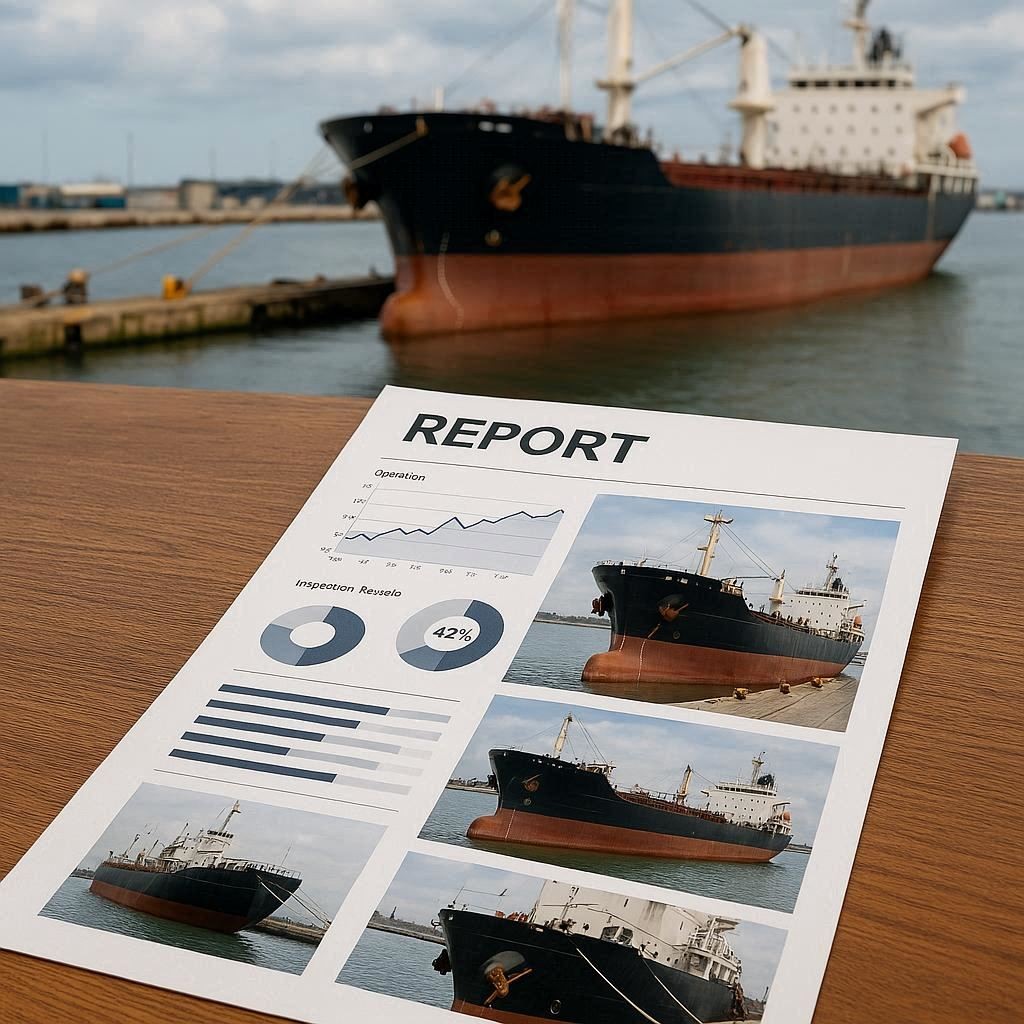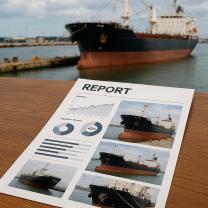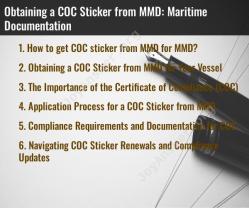Why is there a report on the condition of the vessel?
A report on the condition of a vessel exists to document and communicate the vessel’s physical state, safety, and operational readiness at a specific point in time.
Main reasons for having such a report:
Safety Assurance
Ensures the vessel is seaworthy and meets safety regulations before sailing.
Identifies defects or hazards that could endanger the crew, cargo, or environment.
Regulatory Compliance
Many maritime authorities require condition surveys for licensing, insurance, or port entry.
Demonstrates compliance with international maritime standards (e.g., SOLAS, MARPOL).
Insurance Purposes
Provides insurers with proof of the vessel’s state to set coverage terms and premiums.
Useful evidence in the event of an accident or claim.
Valuation and Sale
Essential for buyers and sellers to determine the vessel’s market value.
Highlights maintenance history and current operational status for negotiations.
Maintenance Planning
Helps shipowners schedule repairs, upgrades, or dry-docking based on identified issues.
Tracks wear and tear over time to avoid costly emergency fixes.
Chartering Requirements
Charterers often request a condition report before agreeing to use the vessel.
Confirms that the ship meets the contractual standards for the intended voyage or cargo.
In short:
A vessel condition report is prepared to ensure safety, meet legal obligations, support insurance and financial transactions, and provide transparency for all parties involved in the vessel’s operation or transfer.
Vessel Condition Report – Sample Outline
1. General Information
Vessel name
IMO number / Registration number
Flag state
Vessel type (e.g., bulk carrier, tanker, fishing vessel)
Year built & shipyard
Gross tonnage & deadweight tonnage (DWT)
Owner/operator details
Inspection date & location
2. Purpose of the Report
Reason for inspection (e.g., pre-purchase, insurance, safety survey, pre-charter)
Scope and limitations of the inspection
3. Summary of Findings
Overall condition rating (e.g., Excellent, Good, Fair, Poor)
Key issues identified
Urgent repairs needed (if any)
4. Hull and Structural Condition
Hull exterior inspection (corrosion, damage, coating condition)
Deck condition
Superstructure condition
Watertight integrity
Underwater hull condition (if inspection/docking included)
5. Machinery and Equipment
Main engine(s) condition and performance
Auxiliary engines/generators
Propulsion system (propeller, shaft, rudder)
Electrical systems
Steering gear
Deck machinery (winches, cranes, windlass)
6. Safety Equipment
Life-saving appliances (lifeboats, life rafts, lifejackets)
Firefighting equipment (extinguishers, fire hoses, fixed systems)
Navigation equipment (radar, GPS, compass, AIS)
Communication systems (VHF, MF/HF radios, satellite)
7. Cargo Systems (if applicable)
Cargo holds/tanks condition
Cargo-handling gear
Pumping systems
8. Accommodation and Habitability
Crew quarters condition
Galley and mess facilities
Sanitation systems
9. Regulatory Compliance
Certificates and documents checked (e.g., Load Line, Safety Construction, Safety Equipment, IOPP)
Compliance with SOLAS, MARPOL, ISM, ISPS as applicable
10. Photos and Supporting Evidence
Photographs of critical areas
Diagrams or plans (if relevant)
11. Conclusions and Recommendations
Summary of vessel’s readiness and safety
Suggested repairs or improvements
Recommended next inspection date
Why Is There a Report on the Condition of the Vessel?
A report on the condition of a vessel, often called a Vessel Condition Survey or a Vessel Condition Report (VCR), exists to provide a detailed, unbiased assessment of a ship's physical state.
What Information Does a Vessel Condition Report Contain?
A Vessel Condition Report is a comprehensive document that typically includes:
General Information: Details about the vessel, including its name, flag, type, year of build, and dimensions.
Structural Condition: An assessment of the hull, decks, and superstructure, noting any signs of corrosion, damage, or poor maintenance. This section often includes specifics on the coating systems and any structural repairs.
Machinery and Systems: An evaluation of the main engines, auxiliary machinery, steering gear, and propulsion system. It also covers the condition of pumps, pipes, and electrical systems.
Safety and Life-Saving Equipment: A check of the vessel's safety gear, such as life rafts, lifeboats, fire-fighting equipment, and emergency systems, to ensure they are present and in good working order.
Cargo Systems: For cargo vessels, this section details the condition of cargo holds, hatches, and loading/unloading gear.
Documentation: A review of the vessel's certificates and records to confirm they are valid and up-to-date.
Photographic Evidence: The report is almost always supported by photographs to visually document the observed conditions.
How Does This Report Impact Maritime Safety?
The Vessel Condition Report is a cornerstone of maritime safety. By identifying potential defects and maintenance issues, it helps prevent accidents at sea.
Who Is Responsible for Preparing the Report?
The report is typically prepared by a third-party marine surveyor. These are independent professionals who specialize in inspecting and assessing the condition of vessels.
When Is the Vessel Condition Report Required?
A Vessel Condition Report is required in several key scenarios:
Before a Sale or Purchase: A potential buyer will commission a VCR to understand the vessel's true value and any needed repair costs before committing to a purchase.
For Insurance Purposes: Insurers require a VCR to assess risk and determine premiums.
A vessel in poor condition will either be denied insurance or face very high premiums. Prior to Chartering: A charterer will request a report to ensure the vessel is in good condition for the duration of the charter, thereby protecting their cargo and commercial interests.
Periodic Surveys: Regulatory bodies or classification societies may require periodic surveys to ensure a vessel continues to meet safety and operational standards throughout its life.



